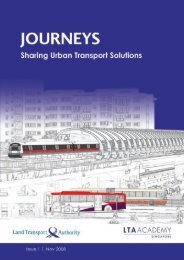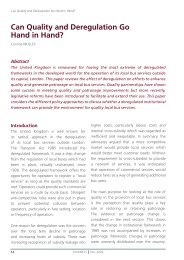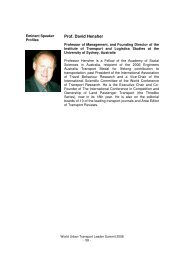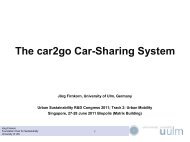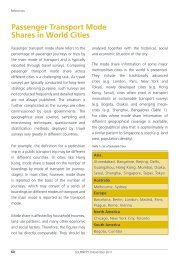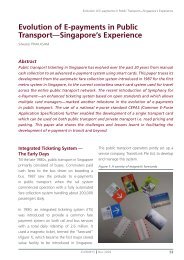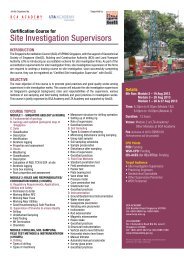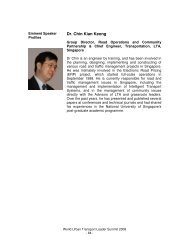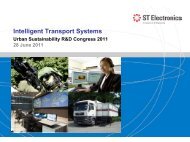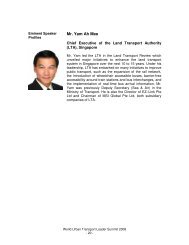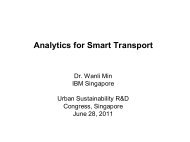Full Version - Issue 7 | November 2011 - LTA Academy
Full Version - Issue 7 | November 2011 - LTA Academy
Full Version - Issue 7 | November 2011 - LTA Academy
You also want an ePaper? Increase the reach of your titles
YUMPU automatically turns print PDFs into web optimized ePapers that Google loves.
Urban Planning in Shanghai, People’s Republic of China<br />
Shanghai has made efforts to control the<br />
rate of growth in private vehicle ownership<br />
through a multi-modal system of urban<br />
development. The city has built mass transit<br />
systems (Figure a), such as, light rail and bus<br />
lines to minimise the rate of growth in personal<br />
vehicle ownership. In addition, it has provided<br />
bike lanes and pedestrian walkways to enable<br />
commuters to connect to the mass transit<br />
system. Unlike Chinese cities with similar rates<br />
of population growth, Shanghai has stabilised<br />
the growth rate of private vehicle ownership<br />
based on distance rather than multiple<br />
trips to make it more convenient and less<br />
expensive at modal interfaces.<br />
When deciding which mass transit system<br />
to build first, it is recommended that<br />
economies consider time horizons for<br />
system completion (since the culture of<br />
personal vehicle ownership may become even<br />
more entrenched during the time it takes<br />
to complete a major system); integration<br />
of commercial and residential development<br />
around the system; and difficulties involved<br />
in developing the route (e.g., can a new<br />
right-of-way be built, or must it be carved<br />
out of existing road space?).<br />
...it is recommended that economies<br />
consider time horizons for system<br />
completion (since the culture of<br />
personal vehicle ownership may<br />
become even more entrenched during<br />
the time it takes to complete a major<br />
system)...<br />
Recommendations for Improving Transportation Energy Efficiency in APEC Economies<br />
Figure a: Maglev in Shanghai<br />
JOURNEYS | <strong>November</strong> <strong>2011</strong><br />
In addition, the cost-per-unit-of-energysaved<br />
of a given system is a key factor. It<br />
is important to consider what level of<br />
investment is required to yield the resulting<br />
energy savings, because there may be other<br />
transportation programs or policies that can<br />
reduce energy consumption at a lower cost.<br />
This calculation must take into account<br />
several factors, including:<br />
i) The energy consumption of a given system;<br />
ii) The energy consumption displaced by that<br />
system, which will be determined largely by<br />
ridership levels (a system with low ridership<br />
may actually consume more energy than it<br />
displaces);<br />
iii) The cost of building the system; and<br />
iv) The lifetime of the system. Systems that<br />
require a good deal of infrastructure are<br />
more expensive initially, but the system may<br />
last much longer, reducing the cost of the<br />
system over time.<br />
49



